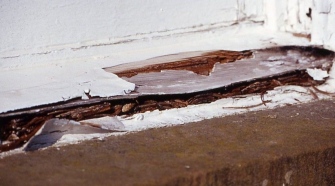The fact that existing SEO exists in a fairly fragile state is something overlooked by most. Minor changes to it can make a page ranking fairly high for a competitive keyword drop off the face of Google’s results pages as soon as tomorrow.
That’s why people whom own websites, businesses especially, must be particularly careful when they alter anything on their websites or take their SEO in a different direction.
Below is a step-by-step guide that will teach what an individual can do to update their website without negatively impacting their current rankings.
1. Starting Small With Titles and Descriptions
Although titles and descriptions play a large impact in how visitors reach a website, they have a small impact on how search engines like Google decide what a page is about.
This makes it possible to optimize page titles and meta descriptions for visitors to improve the click-through rate while minimally impacting any current rankings.
Keep in mind that titles should stay to 50 characters or less in length and that descriptions should stay under 240 characters. Both should retain the target keyword to allow search engines to mark the title and description as relevant, otherwise the search engine may extrapolate a title and description from the content of the page.
2. Minor On-Page Changes are Welcome
Small changes to pages are always welcomed, as it shows search engines like Google that the pages are consistently maintained and updated for accuracy. This is a positive ranking factor that can increase the effectiveness of any given SEO campaign.
What qualifies as minor? That is a tricky question. Anything that leaves the majority of the content on a page the same as it was before can be considered as minor.
In other words, adding a paragraph or two, updating statistics or adding media that helps the reader better understand the content are updates that won’t destroy the SEO of a page.
3. Don’t Rewrite Unless Necessary
Rewriting a page or changing the direction a page flows is a tempting prospect, but it’s not always for the best. Content should remain as it is, as large changes can result in rank drops or shuffles in Google.
If a large amount of new information needs to be added, the best idea is to consider how well the page ranks already. If it is an older page with many links to it, then it’s best to add a contextual link and a small blurb of text to another page.
If there isn’t much to lose, then it’s possible to completely rewrite the page for better gains. It’s worth noting that even this is a risky prospect, as it could lead to unexpected consequences for the rest of a website.
Only attempt this step with a professional SEO company’s help.
Don’t Move Too Quickly
The last step in updating any website is to take it slowly. Gradual changes that occur over a period of weeks are far better than a complete website remodel. They allow search engines like Google to document changes without suspecting that the entire website has been replaced with another website.
By continually making steady updates to a website, the owner will change how favorably search engines look at that website. They will begin to suspect it less of misinformation and trust it more as an authority resource, which is analogous to how people would respect an authority figure.
As always, consult a professional before making any large changes. The integrity of a website’s SEO could depend upon it.
For more information visit : WebitMD











